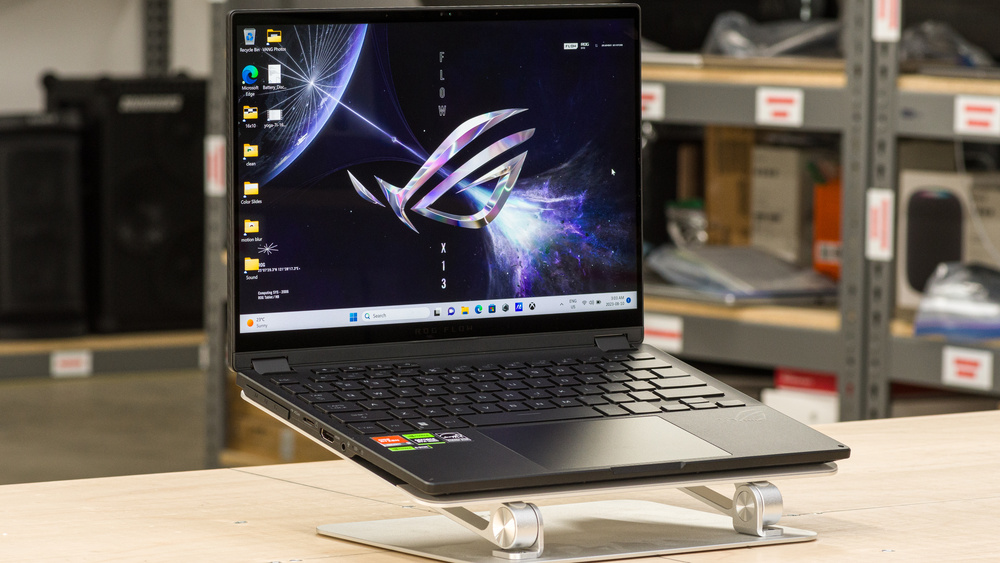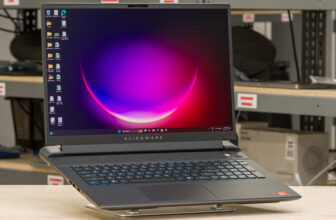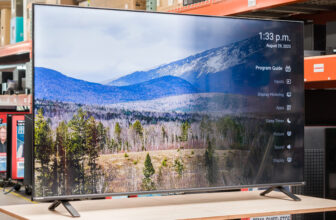
The ASUS ROG Flow X13 is available with the following GPUs:
- AMD Radeon 780M (integrated)
- NVIDIA GeForce RTX 4050 Laptop GPU 6GB GDDR6 VRAM (60W TGP with Dynamic Boost)
- NVIDIA GeForce RTX 4060 Laptop GPU 8GB GDDR6 VRAM (60W TGP with Dynamic Boost)
- NVIDIA GeForce RTX 4070 Laptop GPU 8GB GDDR6 VRAM (60W TGP with Dynamic Boost)
All models have the AMD Radeon 780M since it’s an integrated GPU, and the system does utilize it in lighter workloads to prolong battery life. The Radeon 780M is decent for integrated graphics, with performance roughly equivalent to an NVIDIA GeForce RTX 1650, an entry-level 1080p gaming discrete GPU.
As for the NVIDIA RTX 40-series GPUs, they aren’t a significant upgrade over the 30-series. The most notable addition is Frame Generation, a feature that uses AI to insert artificially generated frames, resulting in higher frame rates and smoother gameplay in supported games. The RTX 4070 can run games at the display’s native QHD+ without many issues; however, you might be unable to max out the graphical settings in the most demanding titles. The RTX 4060 is roughly 20% slower than the 4070; it can still run games at 1440p, but you’ll have to lower the settings further to get over 60 fps. The RTX 4050 is mainly a 1080p gaming GPU that can run some games at 1440p. The problem is its 6GB of VRAM, which isn’t enough for demanding games at the QHD resolution. The lack of VRAM will result in stutters and texture pop-ins, meaning some elements take longer to load and seem to appear out of nowhere. You might even experience pop-ins on the RTX 4060 and 4070 in extremely VRAM-heavy games.
Models with an NVIDIA discrete GPU have a MUX (multiplexer) switch that allows the GPU to send information directly to the display without going through the integrated GPU, meaning you’ll see dramatically better performance than laptops without this feature. The performance difference can be anywhere from 10% to 25%, or more in some cases. There’s also support for NVIDIA Advanced Optimus, which will automatically switch between the integrated graphics and discrete GPU depending on the workload without needing a system reboot or setting change in the BIOS.
As mentioned in the Ports section, you can purchase the ASUS ROG XG Mobile Interface if you need more graphical processing power. It contains an NVIDIA GeForce RTX 4090 Laptop GPU running at a TGP of 150W. Unfortunately, we haven’t tested this eGPU. It will provide better performance than the RTX 4070; just remember that this is still the laptop version of the 4090, not the desktop version, which performs 35% better on average when playing at 1440p and over 50% better at 4k.






